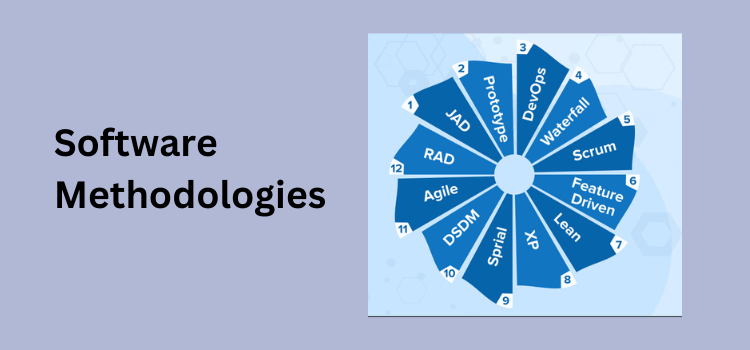Every tap on our screens, every response from our virtual assistants, and every seamless online transaction is woven with knowledge and innovation. This intricate web of intelligence and creativity is woven through the threads of software engineering.
Delving into the history of software engineering, we uncover a tale as dynamic as the codes and algorithms that constitute it. Aside from technology, we see the people, challenges, and breakthroughs that have continuously redefined the digital frontier.
We’ll uncover the pivotal moments and transformative milestones that have charted the course for this ever-evolving field. Whether you’re a tech buff, a budding developer, or simply curious, let’s explore the fascinating story of software engineering.
What is Software Engineering?
Software Engineering is a discipline that has evolved significantly over the years. Understanding the evolution of software engineering can shed light on its importance and the innovations that have shaped its progression.
Computers and Software Engineering
Tracing back the History of Software Engineering, we find that the inception of this field was during the mid-20th century. As computers began to make their way into businesses and research facilities, there was a growing need to develop reliable software solutions for these machines.
But the full power of a computer did not come until programmers started solving problems that didn’t have existing solutions.
Unlike the rudimentary coding methods of the past, Software Engineering aimed to apply systematic and disciplined approaches to software development, ensuring functionality, efficiency, and reliability.
Evolution of Software Engineering Tools
As the software engineering history advanced, so did the tools used by professionals. Initially, programmers worked with low-level machine languages.
However, with the increasing complexity of tasks, higher-level languages like Fortran and C emerged, making software development more efficient. Integration of development environments, version control, and advanced debugging capabilities enable the development of robust, scalable software solutions.
Introduction of Software Engineering Methodology
A significant milestone in the Software Engineering world is the introduction of methodologies. These methodologies provided structured frameworks for managing and executing software projects.
Traditional models like the Waterfall model paved the way for more iterative and agile methods. Collaboration, adaptability, and continuous feedback are important components of the Software Engineering Methodology.
Modern-Day Software Engineering
While reflecting on the software engineering history, it’s essential to recognize its present state and potential future directions.
Today, it encompasses not just the creation of software but also its software testing metrics, maintenance, and improvement.
In the field of Software Engineering, innovations like Artificial Intelligence, Cloud Computing, and Big Data are pushing the field into new frontiers.
When Did Software Engineering Begin?
Now let’s begin our journey to learn about software engineering landmarks.
The Early Days (1945-1965)
The software engineering history can be traced back to the mid-20th century. In its initial stages, software creation was often likened to traditional fields of engineering. By the late 1950s and early 1960s, the term “Software Engineering” started to gain traction.
Pioneers in the field pondered how established engineering principles might be applied to software creation. Significant momentum was achieved when the NATO Science Committee organized two groundbreaking conferences in 1968 and 1969.
Many in the field point to these events as the foundational moments of the software engineering history.
Overcoming the Software Crisis (1965-1985)
However, the road wasn’t always smooth. The subsequent decades, notably the 60s through 80s, were marked by what many termed the “software crisis”. Challenges in Software Engineering became apparent as projects frequently exceeded budgets and timeframes.
Worse, some software issues led to tangible damage, both to property and, tragically, human life. Professionals dealing with finances, safety and other challenges faced this tumultuous period in Software Engineering history.
It was during this time that software’s potential dangers became glaringly apparent, highlighting the need for better Software Engineering methodology and tools.
The Quest for the Perfect Solution (1985-Present)
A significant theme in the software engineering history during the later 20th century was the quest for an ultimate solution or a “silver bullet”. A variety of strategies were hailed as the definitive solution, from structured programming to object-oriented techniques to various Software Engineering tools.
However, in 1987, a pivotal piece titled “No Silver Bullet” by Fred Brooks challenged this notion, suggesting that no single tool or method would bring about a revolutionary change in productivity.
Over time, the Software Engineering community recognized that improvement came from cumulative efforts, not just one magic solution.
Key Milestones in Software Engineering Evolution
There were several pivotal developments in software engineering history:
Emergence as a Profession
Between the mid-90s and mid-2000s, Software Engineering cemented its status alongside computer science and other traditional engineering fields.
Yet, within these eras of innovation and advancement, one transition stands paramount: the move from coding to genuine software engineering. Initially, it was all about making the computer function.
But as problems grew intricate, the title of a software engineer was born. Their role wasn’t just to code but to conceive and craft holistic software experiences.
The Role of Women
The early software engineering history saw women like Grace Hopper playing crucial roles. Although the gender dynamics in Software Engineering have since shifted, the contributions of women remain significant.
Methodologies and Processes
With time, Software Engineering methodologies have become integral, even if sometimes contentious. The introduction and evolution of processes sought to streamline software creation.
Hardware Costs
As technology advanced, the balance of cost between software and hardware shifted. With the advent of affordable PCs, the economic landscape of software projects changed, demanding more cost-effective solutions.
In summary, software engineering history is a tale of evolution, challenges, and innovation. Software is not only safe and efficient but also serves its purposes through a variety of methodologies, tools, and professionals.

Software Engineering: Science, Art, or Both?
When we talk about crafting programs, many feel it’s akin to creating a masterpiece. Coders turn their ideas into digital reality using coding languages and tools, just as painters use brushes and colors.
Delving into the Science History
But is it all about art? Think about traditional engineering fields, for instance, mechanical engineering.
They have well-defined principles, terms, and rules, all anchored in science. These principles come from tried and tested methods, and once they’re established, they guide the engineering process.
Software Engineering mirrors this approach. It draws heavily from the experiences and expertise of those in the field. And over time, these experiences crystallize into systematic theories.
The Evolution from Art to Science
So, is Software Engineering more science than art? The journey of this discipline provides a clue. Initially, like an artist relying on intuition, software developers leaned on their individual experiences or what we can call their ‘gut feeling’.
But as the field matured, these individual experiences were amalgamated into structured guidelines and theories. Thus, Software Engineering transitioned from an art, based on personal insights, to a science, grounded in collective wisdom.

Understanding Software Methodologies
When diving into the history of Software Engineering, one cannot overlook the evolution of methodologies that shaped this realm. At the core, Software Engineering methodologies guide how systems come to life.
Developers follow them to make sure their software meets the needs of users, remains high-quality, and falls within budgets.
The Birth of Development Processes
As we journey through the software engineering history, we see the rise of the software development lifecycle (SDLC). It’s a strategy ensuring software not only meets user demands but also sticks to budget constraints.
Over time, the modern era has leaned towards flexible methodologies, often tagged as “agile”.
Below are some key methodologies that have defined Software Engineering —
Waterfall
Often hailed as a pioneer in the software engineering history methodologies, the Waterfall approach follows a step-by-step routine. One phase concludes before the next one begins, ensuring a systematic progression.
Agile
Agile stands out in the history of Software Engineering for its adaptive nature. It’s not just a methodology but a collection of best practices. It champions swift feedback, adaptability, and collaboration, making software development a dynamic dance.
Lean
With roots tracing back to Toyota’s manufacturing processes, Lean is an early member of the agile family. It pushes Software Engineering teams to streamline their methods.
Using tools like test-driven development, it focuses on crafting clean code, and minimizing flaws.
Scrum
Another shining star in software engineering history, Scrum operates in cycles called sprints. It’s all about team collaboration, delivering a functional software piece after every cycle, and learning from feedback.
Kanban
Kanban, a term hailing from Japan, is all about visualization. In the Software Engineering context, it emphasizes visually mapping out workflows. By keeping an eye on ongoing tasks, teams can enhance their efficiency.
DevOps
Bridging the gap between development and operations, DevOps has made a significant mark in the world of software development methodologies. It’s all about teamwork, where developers and operational experts come together, to ensure smooth delivery and maintenance of software.
The Journey Continues
The software engineering history isn’t just about how software is coded, but also about the strategies, tools, and methodologies that shape its creation. As we’ve seen, from Waterfall to DevOps, each methodology offers unique perspectives, enriching the Software Engineering landscape.
Wrapping up
As we journey through the intricacies and the history of software engineering, it’s evident that this field is ever-evolving. In software engineering, we deal with a wide range of challenges, from foundational methodologies to modern practices.
It’s not just about coding; it’s about the strategies, philosophies, and the passionate individuals who continuously shape this domain. As technology advances, so will the methods, tools, and techniques in software engineering, ensuring that we are always on the cusp of innovation.
Frequently Asked Questions
What’s the difference between Waterfall and Agile methodologies?
Waterfall is a linear approach where each stage of the development process is completed before moving on to the next. It’s systematic and sequential. On the other hand, Agile is more adaptive and flexible, emphasizing collaboration, swift feedback, and iterative development.
How has software engineering evolved over the decades?
Software engineering has seen a transformation from its early days in the 1940s. As technology and user demands have changed, its focus has expanded to include a wide range of methodologies, tools, and practices.
Why is the history of software engineering important?
Understanding the history of software engineering provides insight into its evolution, challenges faced, and solutions derived. It gives context to current practices and offers a perspective on the potential future trajectory of the field.
- Top 10 Cross Browser Testing Tools: The Best Choices for 2024 - October 28, 2025
- 5 Best API Testing Tools: Your Ultimate Guide for 2024 - October 26, 2025
- Top 5 Regression Testing Tools: Comprehensive Review & Guide - October 26, 2025
